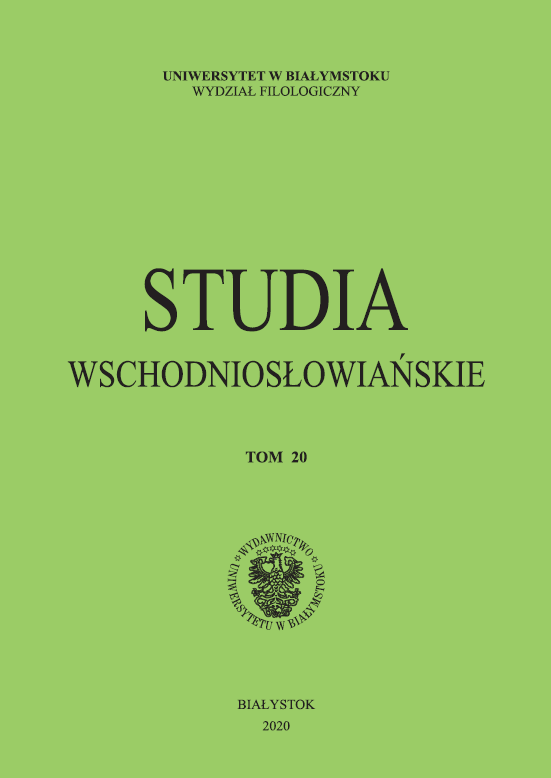Танец в художественной структуре пьес русских, белорусских и польских драматургов 1990-х – 2010-х годов
Dancing in the artistic structure of plays by Russian, Belarusian and Polish playwrights of the 1990s – 2010s
Author(s): Jelena Lepiszewa, Maciej PieczyńskiSubject(s): Language and Literature Studies, Literary Texts, Studies of Literature, Comparative Study of Literature, Belarussian Literature, Polish Literature, Russian Literature, Drama
Published by: Wydawnictwo Uniwersytetu w Białymstoku
Keywords: перформативность; хронотоп; русская белорусская польская драматургия; performativity; chronotope; Russian Belarusian Polish drama
Summary/Abstract: In this paper, dance is considered as an element of the artistic structure of dramatic works of Russian, Belarusian and Polish authors of the 1990s–2010s. It was revealed that this element represents the level of the chronotope: it becomes one of its expressive modes (creating an atmosphere due to emotional «charge»), manifests itself as a «non-everyday form of behavior» of a character (J. Faryno), as a «spatial motive» (O. Bagdasaryan) as a sense-forming centre of the artistic universe. A comparative analysis of the plays written by Russian, Belarusian and Polish playwrights of the indicated period showed that in Russian drama the transition occured from the dance – a «spatial motive» to the dance – a semantic center representing author’s model of the world and a Nietzschean man in the terms of a spontaneous, unstable world order. That was caused by the strengthening of the performative and receptive potential of modern drama. At the same time, in the Belarusian drama, due to more strong genetic ties with folklore, the dance for a long time has been manifesting itself as a game form of non-everyday behavior, however, since the mid-1990s it is often introduced as a «spatial motive» representing the extremely deformed consciousness of characters. If it comes to Polish drama, despite the actualization of the dance in the significant for its development works, in the latest plays it rarely functions as a semantic center, because of political and social themes predomination. The authors of this paper made an attempt to clarify the reasons for differents of the dance in the Russian, Belarusian, Polish drama of the 1990s–2010s, based on sociocultural factors, as well as on the logic of the development of the literary proces.
Journal: Studia Wschodniosłowiańskie
- Issue Year: 2020
- Issue No: 20
- Page Range: 43-62
- Page Count: 20
- Language: Russian

